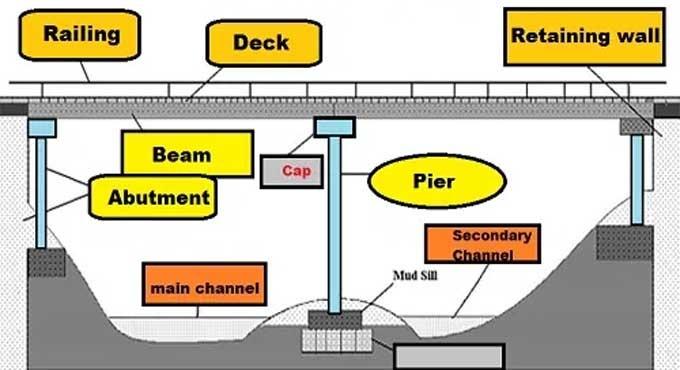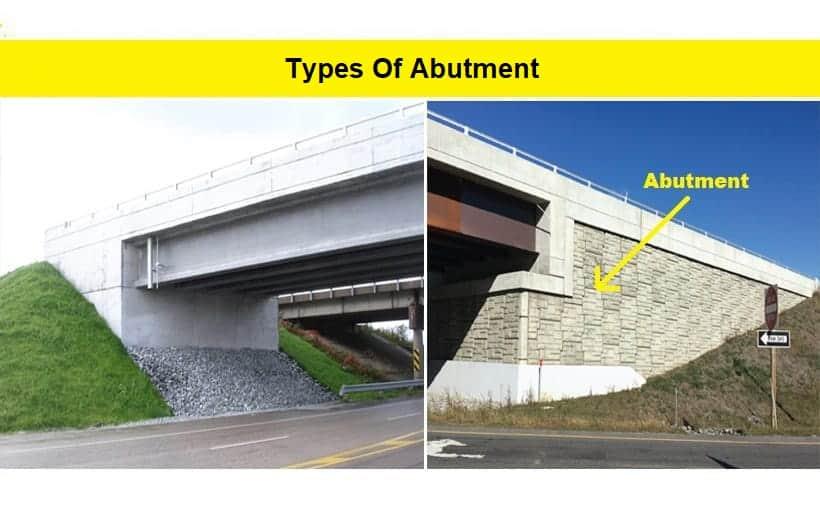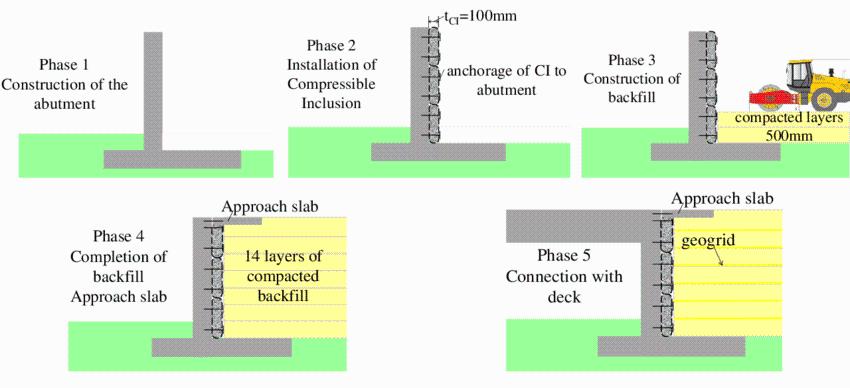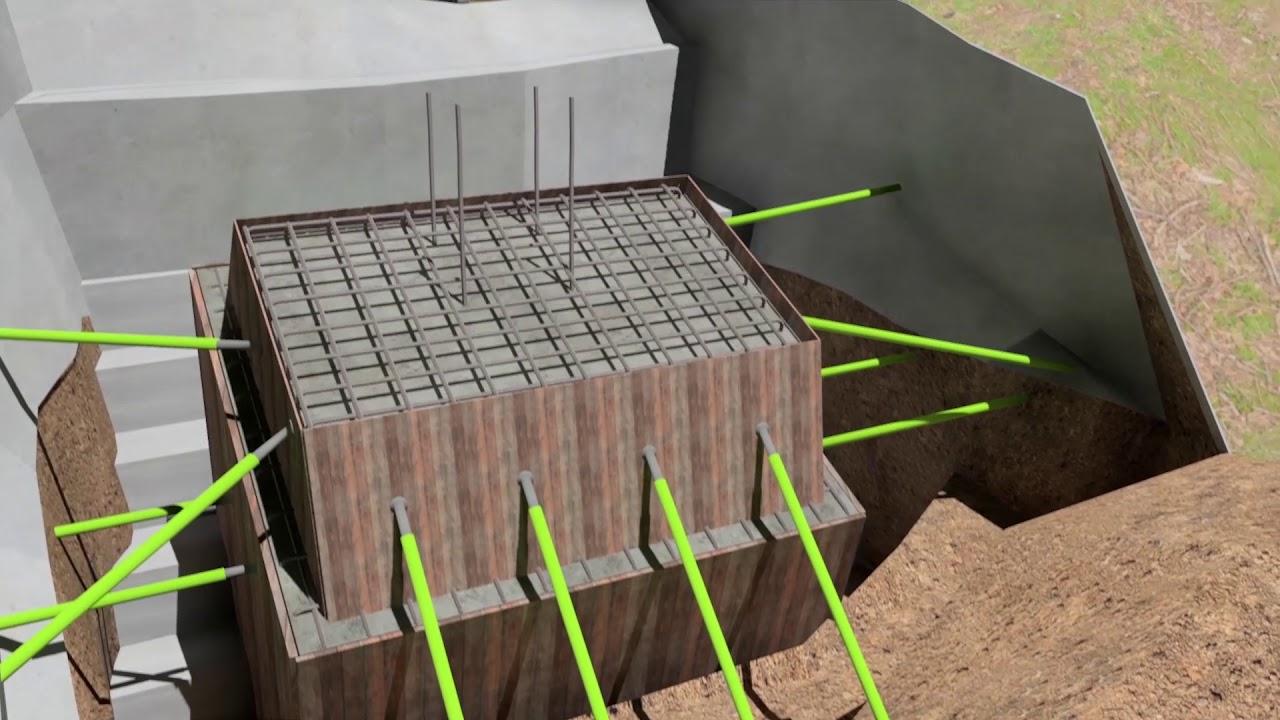



Table of Contents
- Introduction
- Introduction to Abutments
- Types of Abutments
- Functions of Abutments
- Design Considerations for Abutments
- Construction Techniques for Abutments
- Maintenance and Inspection of Abutments
- Conclusion
- Faq's
Introduction
Abutments are fundamental components in construction, serving as the critical interface between a bridge's superstructure and its foundation. They provide essential support, stability, and load transfer, ensuring the safety and longevity of structures such as bridges, dams, and tunnels. This comprehensive guide delves into the various types of abutments, their functions, design considerations, and their significance in modern construction practices.
Introduction to Abutments
In construction, an abutment refers to the substructure located at the ends of a bridge span or dam, providing both vertical and lateral support to the superstructure. It serves as a crucial component that ensures the stability of the structure by transferring loads from the bridge deck to the foundation. Abutments play a fundamental role in maintaining the structural integrity of bridges, preventing excessive movement, and supporting the overall weight of the bridge and the traffic it carries.
 What is Bridge Abutment, LinkedIn
What is Bridge Abutment, LinkedIn
Beyond merely supporting the weight of the bridge deck, abutments also function as retaining walls, resisting the lateral movement of the earthen fill of the bridge approach. They help maintain the proper alignment of the roadway and prevent soil erosion, ensuring a seamless transition between the bridge and its connecting roadways. Their design and construction are influenced by various factors, including load-bearing requirements, soil conditions, and environmental factors, all of which contribute to the long-term durability and safety of the structure.
Also Read: ACP Sheets in Construction: Exploring Types, Features, and the Best Applications
Types of Abutments
Abutments come in various designs, each tailored to specific structural requirements and site conditions. The primary types include:
 Types of Abutment, Daily Civil
Types of Abutment, Daily Civil
1. Gravity Abutments
- Gravity abutments rely on their substantial weight to resist the horizontal forces exerted by the bridge superstructure and the pressure from retained soil. They are typically constructed using reinforced concrete, masonry, or stone, and their stability is achieved through their mass alone rather than additional reinforcement. These abutments are best suited for locations with sufficient space for a broad base, as they require a large footprint to counteract external forces.
- One of the main advantages of gravity abutments is their simplicity in design and construction, which reduces maintenance needs over time. However, they are not ideal for areas with weak soil conditions, as excessive weight can lead to foundation settlement. To enhance durability, proper drainage provisions, such as weep holes or perforated pipes, are integrated to prevent water accumulation and hydrostatic pressure build-up behind the abutment.
2. Cantilever Abutments
- Cantilever abutments are a more efficient design compared to gravity abutments, utilizing a cantilevered wall that extends upward from the foundation to support the bridge deck while also retaining the approach fill. These abutments are made of reinforced concrete and are designed to withstand both vertical loads from the bridge and lateral earth pressures from retained soil.
- The key feature of cantilever abutments is the base slab, which consists of a heel (extending back into the retained soil) and a toe (extending forward). The weight of the retained soil over the heel helps stabilize the structure, reducing the bending moments in the wall. This makes cantilever abutments more economical for medium-height bridges compared to gravity abutments. However, their structural efficiency depends on precise design calculations, proper reinforcement placement, and soil stability assessments.
3. Counterfort Abutments
- Counterfort abutments are a variation of cantilever abutments but include additional vertical triangular supports, known as counterforts, at regular intervals along the rear side of the wall. These counterforts help tie the wall and base slab together, effectively reducing the bending moments within the abutment structure and improving stability.
- This design is particularly useful for tall abutments where significant earth pressures need to be managed efficiently. Counterfort abutments reduce material costs by allowing thinner wall sections while maintaining structural integrity. However, they require more precise construction techniques, and additional reinforcement is needed to ensure stability. They are commonly used in highway bridges, railway bridges, and retaining wall applications where cost and material efficiency are major considerations.
4. Piled Abutments
- Piled abutments are used in areas where the soil near the surface lacks sufficient bearing capacity to support the bridge loads. Instead of relying solely on a spread footing, deep foundation elements, such as piles, are driven into the ground to transfer loads to deeper, more stable soil or rock layers. These piles can be made of concrete, steel, or timber, depending on the structural requirements and site conditions.
- This type of abutment is essential in locations with soft, loose, or waterlogged soils where conventional abutments would not be feasible. Piled abutments are designed to withstand settlement issues by redistributing the weight of the bridge across multiple piles. However, their construction requires specialized equipment for pile driving or drilling, and proper geotechnical analysis is necessary to determine pile depth and spacing. Despite the higher initial costs, piled abutments provide excellent long-term performance in challenging soil conditions.
5. Stub Abutments
- Stub abutments are relatively short and positioned at or near the top of the embankment slope rather than at ground level. This design helps minimize the amount of earth fill required for bridge approaches, making it a cost-effective option in cases where the approach embankment is already high.
- Stub abutments are generally supported by piles or spread footings and are suitable for locations where soil stability is not a major concern. However, their main limitation is their inability to withstand significant lateral earth pressures, which makes them unsuitable for heavy-load applications or sites prone to significant settlement. Proper drainage and erosion control measures must be implemented to prevent soil movement behind the abutment.
6. Semi-Integral Abutments
- Semi-integral abutments are designed without expansion joints between the bridge deck and the abutment, forming a continuous structure. This eliminates the need for bearings or traditional expansion joints, reducing maintenance requirements and improving durability.
- The main advantage of semi-integral abutments is their ability to minimize structural deterioration caused by water infiltration, debris accumulation, and joint failures. However, the lack of expansion joints means that the entire bridge structure must be designed to accommodate thermal expansion and contraction. This design is commonly used in modern highway bridges, as it enhances structural performance while lowering long-term maintenance costs. Proper soil-structure interaction and flexibility considerations are critical when implementing semi-integral abutments.
Functions of Abutments
Abutments serve several critical functions in bridge construction:
1. Load Transfer
One of the primary roles of an abutment is to transfer loads from the bridge deck and superstructure to the foundation. This load transfer mechanism includes:
- Dead Load Support: The abutment bears the weight of the bridge itself, including the deck, girders, and other structural components. This ensures that the bridge remains stable under its own weight.
- Live Load Distribution: The abutment supports dynamic loads from vehicles, pedestrians, and other moving forces. The design must account for traffic variations, including heavy trucks and emergency loads.
- Environmental Load Resistance: Abutments play a crucial role in resisting environmental forces such as wind, seismic activity, and thermal expansion. In earthquake-prone areas, abutments are designed with flexible or reinforced foundations to accommodate seismic forces without structural failure.
- Hydraulic Load Management: For bridges constructed over rivers or water bodies, abutments help in distributing hydraulic forces, preventing erosion and structural degradation due to water flow.
By effectively transferring these loads to the foundation, abutments ensure that the bridge remains structurally sound, minimizing stress and preventing failure over time.
2. Stability and Support
Abutments provide essential stability to the bridge by anchoring the ends of the superstructure and preventing movements that could compromise structural integrity. Their role in stability includes:
- Preventing Bridge Movement: Without abutments, a bridge would be prone to unwanted shifts caused by external forces such as traffic loads, wind pressure, and temperature fluctuations. Properly designed abutments prevent such movements, ensuring the bridge remains in place.
- Retaining the Approach Embankment: The abutment acts as a retaining structure, holding back the earth behind it. This prevents soil erosion, landslides, and gradual shifting that could affect the roadway's integrity.
- Supporting Uneven Terrain: In cases where bridges are constructed over valleys, rivers, or deep gaps, abutments help support the bridge ends in locations where direct ground support is not possible.
- Withstanding Vertical and Lateral Forces: Abutments must resist both downward gravitational forces and lateral forces from soil pressure and environmental conditions. The design and reinforcement of abutments are crucial in managing these forces effectively.
Properly constructed abutments provide the necessary strength and support to maintain the bridge's stability over decades of use.
3. Resistance to Movement
Abutments act as robust retaining structures that resist various types of movements caused by different forces, including:
- Soil Pressure Resistance: The abutments counteract the lateral earth pressure exerted by the backfill material behind the structure. Without this resistance, the soil could push against the bridge deck, leading to misalignment or collapse.
- Thermal Expansion Control: Bridges expand and contract due to temperature changes. Abutments help accommodate these movements by providing controlled expansion joints or flexible connections that prevent damage to the bridge structure.
- Vibration and Traffic Load Absorption: Continuous vehicular movement generates vibrations and dynamic forces. Abutments are designed to absorb these vibrations and distribute the forces safely to the foundation, preventing excessive wear on the bridge components.
- Water Current and Erosion Protection: In cases where bridges span rivers or water bodies, abutments protect the structure from scouring and erosion caused by water currents. Additional protective measures, such as riprap or scour-resistant materials, may be incorporated to reinforce the abutments.
By resisting these movements, abutments ensure that the bridge remains aligned, stable, and functional over time, reducing the risk of structural failure.
4. Alignment Control
Properly designed abutments ensure that the bridge deck aligns seamlessly with the approach roads, providing a smooth and safe transition for users. Their role in alignment control includes:
- Maintaining Road Continuity: Abutments ensure that the roadways leading to and from the bridge remain level and stable, preventing sudden height differences that could be hazardous to vehicles and pedestrians.
- Minimizing Structural Deformations: Over time, bridges are subject to natural settling, foundation shifts, and external pressures. Well-designed abutments help maintain proper alignment by countering these deformations.
- Reducing Impact on Vehicles: Poorly aligned bridges can cause abrupt changes in elevation, leading to discomfort, increased wear on vehicles, and safety risks. Abutments help in maintaining a uniform transition between the bridge and the road.
- Enhancing Bridge Aesthetics and Functionality: Abutments are often designed with architectural considerations to complement the surrounding infrastructure. Well-constructed abutments not only provide alignment but also contribute to the overall aesthetic appeal of the bridge.
By ensuring smooth alignment and road transition, abutments enhance both safety and the driving experience, making them an essential component of bridge construction.
Also Read: CLC Bricks: Lightweight, Durable, and Sustainable
Design Considerations for Abutments
Designing abutments requires a thorough understanding of various factors to ensure structural integrity and longevity:
 Construction stages of Abutments, ResearchGate
Construction stages of Abutments, ResearchGate
1. Material Selection
The choice of materials for abutment construction significantly impacts its load-bearing capacity, durability, and resistance to environmental factors. The commonly used materials include:
- Concrete: Reinforced concrete is the most widely used material for abutments due to its strength, durability, and adaptability to various structural designs. It can be precast or cast in place, depending on site conditions and project requirements.
- Stone Masonry: Traditionally used in historic bridges, stone masonry abutments provide aesthetic appeal and long-lasting performance. However, they are labor-intensive and not ideal for modern heavy-load applications.
- Steel Reinforcement: Reinforced concrete abutments incorporate steel reinforcements to enhance tensile strength, improving their ability to withstand heavy loads and dynamic forces.
- Composite Materials: In some modern applications, composite materials are being explored to improve performance while reducing weight and environmental impact.
Material selection is influenced by several factors, including:
- Load-bearing requirements: The material must support the dead and live loads of the bridge efficiently.
- Environmental exposure: Abutments exposed to extreme temperatures, water, or chemical exposure must be made of materials that resist corrosion and degradation.
- Maintenance considerations: Durable materials reduce the frequency and cost of repairs over the bridge's lifespan.
- Construction costs and availability: The choice of material should balance cost-effectiveness with long-term performance.
2. Geotechnical Factors
A thorough geotechnical analysis is essential to ensure that the soil beneath the abutment can adequately support the structure without excessive settlement or failure. Key geotechnical considerations include:
- Soil Bearing Capacity: The ability of the soil to support the abutment and bridge loads determines whether shallow or deep foundations are required. Weak soils may necessitate pile foundations or soil stabilization techniques.
- Soil Settlement and Consolidation: Over time, soil compaction and consolidation can lead to settlement, causing structural misalignment. Engineers must evaluate potential settlement issues and design abutments with sufficient allowances.
- Subsurface Conditions: Soil investigations using borehole drilling and standard penetration tests (SPT) help assess the presence of weak layers, groundwater levels, and soil composition.
- Lateral Earth Pressure: The abutment must be designed to resist lateral soil pressures, especially in retaining wall-type abutments. Reinforcement and counterfort elements may be added to improve stability.
- Slope Stability: If the bridge is constructed on sloped terrain, slope stability analysis is required to prevent landslides or erosion from affecting the abutment.
By conducting a detailed geotechnical study, engineers can determine the best foundation type and reinforcement strategies to enhance abutment performance.
3. Hydrological Considerations
For bridges over rivers, streams, or flood-prone areas, hydrological factors play a crucial role in abutment design. Poor hydrological planning can lead to scour, erosion, and structural failure. Key considerations include:
- Flood Levels and Flow Velocities: Engineers must assess historical flood data and current water flow conditions to determine the risk of flooding and design abutments accordingly.
- Scour Protection: Water flow can erode soil around abutments, causing undermining and structural instability. Common scour protection methods include:
- Riprap (placement of large stones around the base of the abutment)
- Concrete aprons and cutoff walls to prevent soil displacement
- Sheet piles driven into the riverbed for additional support
- Drainage Systems: Proper drainage systems, such as weep holes and geotextile filters, help prevent water buildup behind abutments, reducing hydrostatic pressure and soil saturation.
- Sediment Deposition: Over time, sedimentation can alter water flow patterns, affecting abutment stability. Engineers must design abutments that can withstand gradual changes in riverbed conditions.
By addressing these hydrological concerns, abutments can be protected from water-induced failures and maintain long-term functionality.
4. Seismic Design
In earthquake-prone areas, abutments must be designed to accommodate seismic forces and ground movements to prevent catastrophic failures. Seismic considerations include:
- Flexible Joints and Expansion Gaps: Bridges experience movement during seismic activity, and incorporating flexible joints allows controlled expansion and contraction, reducing stress on the abutment.
- Reinforced Foundations: Additional reinforcement, such as steel cages, deep foundations, and soil improvement techniques, enhances the abutment's ability to resist seismic loads.
- Base Isolation Systems: Some advanced bridge designs incorporate base isolation techniques, using elastomeric bearings or lead-rubber bearings to absorb seismic energy and prevent excessive displacement.
- Ductile Design Approach: Ensuring that abutment components have sufficient ductility allows them to deform under seismic stress without sudden failure. Using reinforced concrete with high-tensile steel reinforcement improves ductility.
- Soil-Structure Interaction Analysis: The behavior of soil during an earthquake can affect abutment stability. Liquefaction-prone soils require special foundation treatments such as stone columns or deep soil mixing to mitigate risks.
Proper seismic design helps ensure that bridges remain functional and safe even after significant seismic events.
Construction Techniques for Abutments
The construction of abutments follows a well-structured process to ensure durability and structural integrity.
 Bridge Abutment Construction Simulation, Youtube
Bridge Abutment Construction Simulation, Youtube
Site Preparation
- Soil Testing: Before construction begins, geotechnical tests are performed to evaluate the soil's load-bearing capacity and stability.
- Excavation: Earthwork is carried out to remove unsuitable material and prepare the foundation base.
- Drainage Systems: Proper drainage is ensured to prevent water accumulation that could weaken the foundation.
Foundation Work
- Shallow Foundations: Suitable for firm soil conditions, where the load is distributed over a wider area.
- Deep Foundations: Used in weak or loose soil, piles or piers are driven deep into the ground to provide stability.
Abutment Construction
- Formwork and Reinforcement: Steel reinforcement bars (rebars) are placed within the formwork to enhance strength.
- Concrete Pouring: High-strength concrete is poured into the formwork, ensuring proper compaction and curing.
- Expansion Joints and Bearings: If required, expansion joints and bearings are installed to accommodate movements due to temperature changes.
Quality Control Measures
- Material Testing: Ensuring the quality of concrete, steel, and other materials used.
- Structural Inspection: Regular monitoring of alignment, reinforcement placement, and formwork integrity.
- Load Testing: Conducted to verify the load-bearing capacity before allowing vehicular movement.
Also Read: Shear Walls in Construction: Essential for Structural Stability and Safety
Maintenance and Inspection of Abutments
Routine maintenance and inspections are essential to prolong the life of abutments and prevent major structural issues.
Routine Inspections
- Visual checks for cracks, spalling, or corrosion.
- Monitoring of settlement or shifting.
- Checking for water accumulation or drainage issues.
Common Issues and Remedies
|
Issue |
Cause |
Remedy |
|
Cracking |
Thermal expansion, foundation movement |
Expansion joints, grouting |
|
Erosion |
Water flow, scour |
Installing riprap or protective barriers |
|
Corrosion |
Exposure to moisture and chemicals |
Protective coatings, cathodic protection |
|
Settlement |
Weak soil or poor compaction |
Soil stabilization, underpinning |
Rehabilitation Techniques
- Concrete Repairs: Epoxy injections for cracks, surface repair for spalling.
- Strengthening: Use of fiber-reinforced polymers (FRP) or additional reinforcement.
- Foundation Improvement: Pile reinforcement, grouting, or soil stabilization.
Conclusion
Abutments are a crucial element in bridge construction, serving as the primary support system for the superstructure while also acting as retaining structures for embankments. Proper design, material selection, and construction techniques ensure their effectiveness and durability. Regular inspections and maintenance help mitigate potential issues, ensuring the longevity and safety of the structure.
With advancements in engineering and construction methods, modern abutments are becoming more resilient, adaptable, and cost-effective. Whether for small pedestrian bridges or large highway overpasses, abutments remain an integral part of infrastructure development.
explore further
Latest from Editorials
More from Publications
Resources
Dwello, for every home buyer, is a way to go from 'I feel' to 'I know', at no extra cost.



